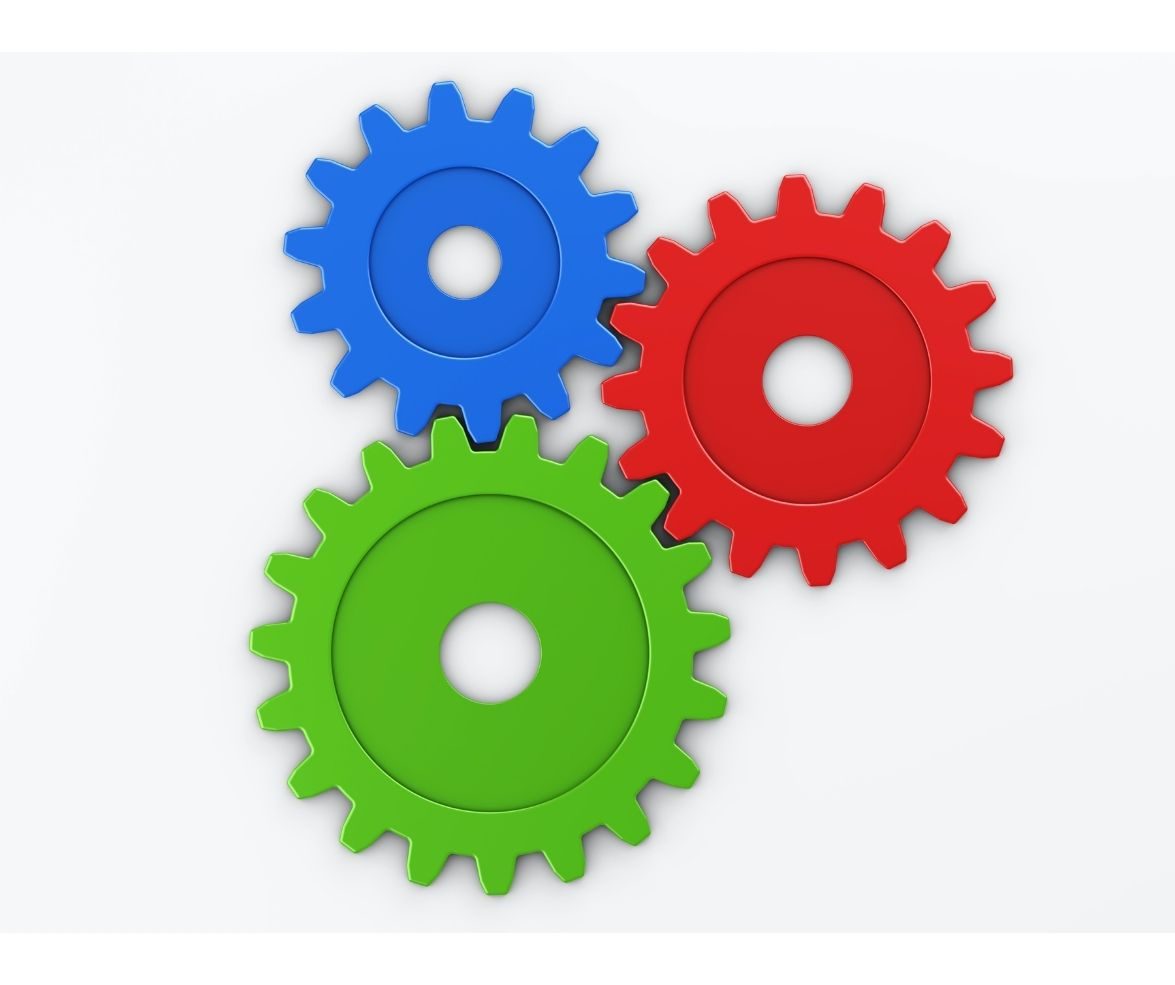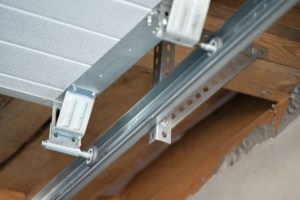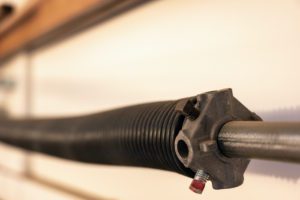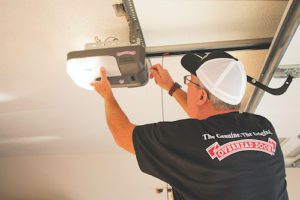
Key Components of a Garage Door
Garage doors serve as much more than simple barriers; they’re meticulously designed systems comprising multiple components. By understanding each part of your garage door operating system, you ensure your door’s longevity, can better troubleshoot minor issues, and know when to call in the professionals.
Garage Door Panels:
Function: They’re the main visual element of your garage door, composed of various materials like steel, wood, or aluminum. These multiple panels are hinged together, allowing the door to bend and follow the tracks during its operations.
Maintenance Tip: Regularly inspect for signs of damage, such as warping, dents, or chipping paint. Such damages could cause your door to bend.
Rollers:
Function: Garage door rollers are crucial components that play a vital role in the seamless operation of a garage door system. Here’s a comprehensive look at the purpose and significance of these rollers:
1. Smooth Movement: Garage door rollers facilitate the smooth and efficient movement of the garage door as it travels up and down the tracks. By reducing friction between the door and the tracks, rollers ensure that the door opens and closes with minimal resistance.
2. Guided Operation: The rollers fit within the tracks, acting as guides for the garage door. They ensure the door remains aligned within its tracks, preventing any side-to-side wobble or misalignment during operation.
3. Reducing Wear and Tear: By providing a smooth movement and reducing friction, garage door rollers help in minimizing wear and tear on other components of the door system, such as the tracks, springs, and garage door opener. This ensures a longer lifespan for the entire system.
4. Supporting Door Weight: While the springs handle the bulk of the door’s weight, the rollers bear the brunt of the door’s weight as it moves, ensuring an even distribution of pressure along the tracks. This balanced distribution prevents undue stress on any single point of the track, maintaining the structural integrity of the system.
5. Noise Reduction: Quality, well-lubricated rollers contribute significantly to noise reduction. A garage door operating with worn-out or damaged rollers can produce loud, grinding noises. On the other hand, a door with well-maintained rollers operates much more quietly.
6. Enhancing Speed and Efficiency: Efficient rollers can increase the speed at which a garage door opens or closes. By reducing friction and ensuring a fluid motion, rollers can improve the overall efficiency of the door operation.
7. Safety: Smooth-operating rollers reduce the risk of the garage door getting stuck or going off-track, which can lead to potential damage or injury.
Maintenance Tip: Annual cleaning and lubrication can prevent performance issues.

Tracks:
Function: Metal guides facilitate the ascent and descent of the garage door.
Garage door tracks are integral components of a garage door system that play several essential roles:
1. Guiding the Door: The primary purpose of garage door tracks is to provide a guided pathway for the door to follow during its operation. They ensure that the door moves in a straight and controlled path, whether it’s being lifted upwards or lowered downwards.
2. Supporting the Door’s Weight: While the springs and cables manage most of the door’s weight, the tracks bear the brunt of the door’s lateral weight. By holding the rollers in place and providing a firm pathway, they support and distribute the weight of the door evenly.
3. Maintaining Alignment: The tracks play a crucial role in ensuring the door remains aligned throughout its movement. Properly aligned tracks prevent the door from wobbling or moving unevenly, which can lead to potential damages or accidents.
4. Enhancing Safety: Tracks contribute to the safety of the garage door operation. A door running smoothly within its tracks is less likely to experience malfunctions, come off its path, or pose safety hazards to users and nearby objects.
5. Ensuring Efficient Operation: With well-maintained tracks, a garage door operates more efficiently. They enable a smooth, frictionless movement, allowing the door to open and close with minimal resistance. This efficiency reduces wear and tear on the garage door opener and other components.
6. Structural Support: Tracks provide structural support, ensuring that the door remains firmly in place. Without tracks, there would be no framework for the door to operate within, making them foundational for the garage door system.
7. Noise Reduction: Good quality tracks that are free from damages and obstructions can help in reducing operational noises. A door that glides smoothly on its tracks is quieter than one that encounters resistance or obstructions.
Maintenance Tip: Ensure they remain free of obstructions, straight, and well-lubricated to prevent off-track occurrences.
Springs (Torsion & Extension):
Function: Acting as the muscles, they counterbalance the door’s weight, facilitating its movement.
Garage door springs play a pivotal role in the function and safety of a garage door system. Here’s a detailed explanation of their purpose:
1. Counterbalance the Weight of the Door: The primary purpose of garage door springs is to counteract the weight of the garage door. Garage doors can be quite heavy, often weighing several hundred pounds. The springs store mechanical energy when the door is closed, and they release this energy when the door is opened. This counterbalancing effect makes it possible for the door to be lifted with minimal effort, whether by hand or by the garage door opener.
2. Assist in Smooth Operation: The springs help ensure the door opens and closes smoothly and evenly. By providing balanced tension, they prevent one side of the door from moving faster than the other, which could cause the door to go off track or become misaligned.
3. Reduce Strain on the Garage Door Opener: By counterbalancing the door’s weight, the springs significantly reduce the load on the garage door opener. Without springs, the opener would have to work much harder, leading to faster wear and tear and potential early failure of the motor.
4. Enhance Safety: In the event of a malfunction or a break in the garage door’s cables or pulleys, the springs act as a safety net. Their tension can prevent the door from crashing down rapidly, potentially causing injury or damage.
5. Provide Flexibility: Garage door springs flex and extend, adjusting to the weight and movement of the door. This flexibility allows them to absorb and dissipate the energy generated by the door’s movement, reducing stress on other components of the system.
6. Extend the Lifespan of the Door and Opener: By managing the bulk of the door’s weight and ensuring smooth, balanced operation, the springs help reduce wear and tear on other parts of the system, such as the tracks, rollers, and opener. This can lead to a longer lifespan for both the door and the opener.
There are two main types of garage door springs: torsion springs and extension springs. While they serve the same primary functions, their design and location in the garage door system differ. Torsion springs are mounted above the garage door, while extension springs are located on either side of the door, running parallel to the tracks.
Causes of a Broken Garage Door Spring
Maintenance Tip: Due to their high tension, they can be dangerous. Always opt for professional help for repairs and maintenance.

Cables:
Function: They support the door’s weight as it moves and runs alongside your springs.
Garage door cables play a critical role in the safe and efficient operation of a garage door system.
1. Counterbalance System: Garage door cables, in tandem with torsion or extension springs, form a counterbalance system. This system ensures that the heavy weight of the garage door is evenly distributed, allowing the door to open and close smoothly.
2. Lifting and Lowering the Door: The cables are directly responsible for lifting and lowering the door. When the door is in motion, the springs unwind (or expand in the case of extension springs), transferring tension to the cables. This tension effectively lifts the door. Conversely, as the door is lowered, the springs wind back up (or contract), and the cables ensure the door descends in a controlled manner.
3. Safety Mechanism: In the event of a spring breakage, the cables act as a safety net. They prevent the garage door from crashing down violently, which could lead to property damage, personal injury, or both. The cables ensure that the door’s descent is controlled, even if the springs are no longer functional.
4. Maintaining Door Alignment: Garage door cables help in ensuring that the door remains level and aligned during its operation. If one cable becomes slack or breaks, the door can become misaligned, leading to uneven wear and potential damage to other components.
5. Enhancing Durability and Longevity: A well-maintained cable system reduces undue stress on other garage door components, such as the tracks, rollers, and opener. This not only ensures smooth operation but also extends the lifespan of the garage door system.
6. Manual Operation: In situations where the garage door opener fails or there’s a power outage, the cables play a vital role if the door needs to be opened or closed manually. They ensure that manual lifting or lowering of the door can be done safely.
Maintenance Tip: Regularly check for wear or fraying. A worn-out cable might break and cause harm.
Garage Door Opener:
Function: The purpose of a garage door opener is to automate the process of opening and closing a garage door, eliminating the need for manual effort. Here are its primary functions and benefits:
- Convenience: With the push of a button on a remote control, wall switch, or even a smartphone app in some modern systems, you can operate the garage door without having to physically lift or close it.
- Safety: Many garage door openers have safety features like auto-reverse, which will stop and reverse the door if an object, vehicle, or person is detected in its path, preventing injuries or damage.
- Security: Garage door openers often come with security features. For instance, they can be equipped with rolling code technology, which changes the opener’s code each time it’s used, preventing unauthorized access.
- Lighting: Many garage door openers have built-in lights that illuminate the garage when the opener is in use, providing visibility during night hours or in darker garages.
- Protection from Weather: With an automatic opener, individuals can quickly close or open their garage without being exposed to harsh weather conditions.
- Energy Efficiency: Modern garage door openers are designed to be more energy-efficient, consuming less power in standby mode.
- Integration with Home Automation Systems: Many newer models can be integrated with smart home systems, allowing homeowners to control their garage door from anywhere with an internet connection.
To View More About a Garage Door Opener
Maintenance Tip: Ensure it functions correctly and know when a replacement might be in order.

Remote Control and Wall Switch:
Function: Remote controls initiate door movement from a distance, while wall switches, usually mounted inside the garage, allow for manual operation.
The Remote Control and Wall Switch serve as primary interfaces for operating a garage door opener, each offering unique benefits and conveniences tailored to different scenarios and user needs. Here’s a breakdown of their purposes:
Remote Control for a Garage Door:
- Convenience on the Go: A remote control allows homeowners to operate their garage door without leaving their vehicle, especially useful during inclement weather.
- Portability: Being compact, it can be easily carried on a keychain, in a purse, or placed in a vehicle’s console or visor.
- Security: Modern remote controls use rolling code technology, which means the code changes every time the remote is used, preventing potential unauthorized access.
- Multiple Access: Some remotes are designed to operate multiple garage doors or gates, a feature beneficial for homeowners with multiple entry points.
- Ease of Access: For those who might be returning home with groceries or other items, the remote allows for hands-free operation of the garage door.
Wall Switch for a Garage Door:
- Fixed Location: Installed inside the garage, the wall switch provides a consistent and known location for garage door operation, ensuring you always know where to find it.
- Internal Access: It’s perfect for when you want to enter or exit the garage on foot, or if you’re working in the garage and need to open or close the door without hunting down a remote.
- Multi-Functionality: Advanced wall switches can include features like a lock button (which disables all remote controls for added security), a light control button, or even a timer to close the garage door automatically after a set period.
- Safety: If for some reason the remote is lost or its battery dies, the wall switch serves as a reliable backup for operating the door.
- Integration with Home Systems: Some wall switches can be integrated with household security systems or even outdoor lighting, expanding their functionality beyond just the garage door.
In summary, while both the remote control and wall switch serve the primary function of operating the garage door, they cater to different use cases and scenarios. The remote control offers portability and convenience from outside, while the wall switch provides dependable access from inside the garage. Both together ensure that homeowners have flexibility and ease in operating their garage door.
Maintenance Tip: Always ensure both are in working order for convenience and safety.
Safety Sensors:
Function: Positioned near the floor, they detect obstructions, ensuring the door doesn’t close on an obstruction.
Garage door safety sensors serve a crucial role in the safety and proper functioning of automated garage door systems. Their main purposes include:
1. Accident Prevention: The primary purpose of safety sensors is to prevent accidents. When an obstruction is detected in the path of a closing garage door, the sensors send a signal to the garage door opener to stop and reverse the door’s direction. This functionality is particularly critical for preventing potential injuries to children, pets, or any unsuspecting individual who might be in the way of the door.
2. Property Protection: Beyond personal safety, these sensors also prevent damage to property. For instance, if a car hasn’t cleared the garage doorway or if there’s an object left underneath the door, the sensors will ensure the door doesn’t close on them, preventing potential damage.
3. Compliance with Safety Regulations: In many countries, safety sensors are not just a nice-to-have; they are a mandatory requirement for all automated garage door installations. This mandate is to ensure that all garage doors have a basic level of safety functionality to prevent avoidable accidents.
4. Peace of Mind: Knowing that your garage door is equipped with safety sensors offers homeowners peace of mind. They can be assured that their door will not inadvertently close on a child, pet, or valuable possession.
5. Enhancing Overall Garage Door Function: While the main purpose of safety sensors is accident prevention, they also play a role in the overall functioning of the garage door system. A malfunctioning sensor can prevent the door from closing, prompting homeowners to check for and address any issues, which might include obstructions or sensor misalignment.
To View More About Safety Sensors
Maintenance Tip: Regular cleaning and alignment checks will prevent issues like the door refusing to close.
Weatherstripping:
Function: These seals protect your garage from external elements, ensuring a regulated internal environment.
1. Thermal Insulation: Weatherstripping acts as a thermal barrier, preventing cold or hot air from entering the garage. This insulation helps maintain a more consistent temperature inside the garage, which can be especially beneficial if the space is used for purposes beyond vehicle storage, like a workshop or recreational area.
2. Energy Efficiency: By preventing drafts and maintaining stable temperatures, weatherstripping can reduce the amount of energy required to heat or cool adjacent parts of the home, leading to potential savings on energy bills.
3. Moisture Barrier: Weatherstripping prevents rainwater, snow, or other moisture from seeping into the garage. This protection is crucial in preventing water damage to the contents of the garage, the garage door’s components, and the floor.
4. Pest and Dust Prevention: By sealing gaps around the garage door, weatherstripping acts as a barrier against pests, such as rodents or insects, and prevents dust and debris from being blown into the garage by the wind.
5. Noise Reduction: Weatherstripping can dampen some of the outside noise, contributing to a quieter interior environment.
6. Protection of Door and Frame: Weatherstripping can also provide a soft cushion for the door to rest against when it’s closed, reducing wear and tear on both the door and its frame.
7. Enhanced Door Performance: A well-sealed garage door closes more securely and smoothly. The additional cushioning and insulation can also reduce vibration during operation.
Maintenance Tip: Annual inspections can prevent damage and help in maintaining a cooler garage.
Emergency Release:
Function: In the event of power failures or malfunctions, this mechanism facilitates manual garage door operation.
The emergency release on a garage door, often recognized by its red handle and attached cord, serves a crucial safety and convenience function. Here are the primary purposes of the emergency release:
1. Manual Operation in Power Outages: The most common use of the emergency release is to allow homeowners to manually open or close the garage door during power outages. When electricity is out, and the garage door opener cannot function, pulling the emergency release handle disengages the door from the opener, enabling manual operation.
2. Quick Response in Emergencies: In urgent situations where there’s a need for immediate exit or entry, the emergency release allows for rapid disengagement and manual operation of the door without having to wait for the automatic opener.
3. Safety during Malfunctions: If there’s a malfunction with the garage door opener or if the door is stuck due to an obstruction, the emergency release provides an option to disengage the door from the opener, preventing potential damage or injury.
4. Maintenance and Repairs: For technicians or homeowners performing maintenance or repairs on the door or the opener, the emergency release offers a way to separate the door from the automated system, ensuring safer working conditions.
5. Protection from Entrapment: While modern garage door openers come equipped with safety sensors to prevent entrapment, the emergency release serves as an additional safety measure. If someone or something becomes trapped beneath a descending door, quick access to the emergency release can prevent injury.
To View More About the Red Emergency Release
Maintenance Tip: Familiarize yourself with its operation to ensure safety during emergencies.

Your garage door’s efficiency and safety depend on the harmonious functioning of these components. Some issues can be addressed with a DIY approach while others necessitate expert intervention. Understanding each component and its significance ensures a long-lasting, efficient, and safe garage door system.
Need Expert Assistance?
While understanding the components of your garage door is beneficial, nothing beats the expertise of a trained professional. If you notice any issues or just need a routine check-up, don’t hesitate. Trust the specialists who know best. Call Overhead Door Company of Huntsville/North Alabama today!
Your safety and satisfaction are our top priorities. Let us handle the intricacies of your garage door so you can enjoy peace of mind.



